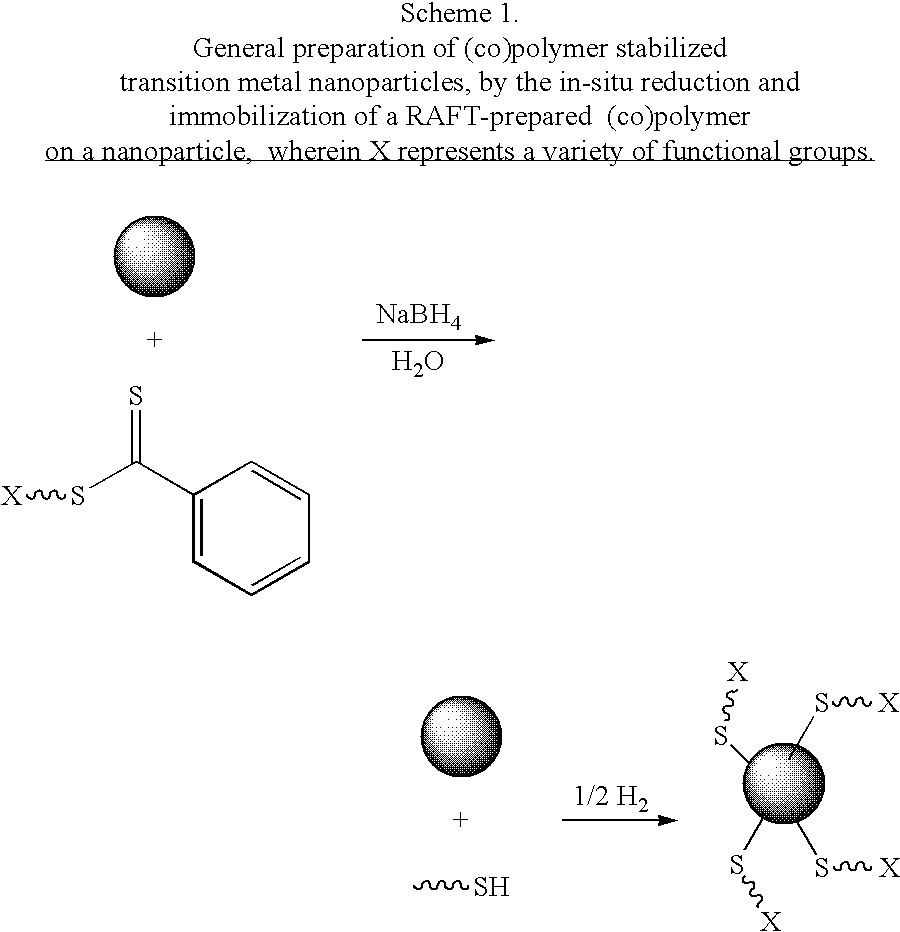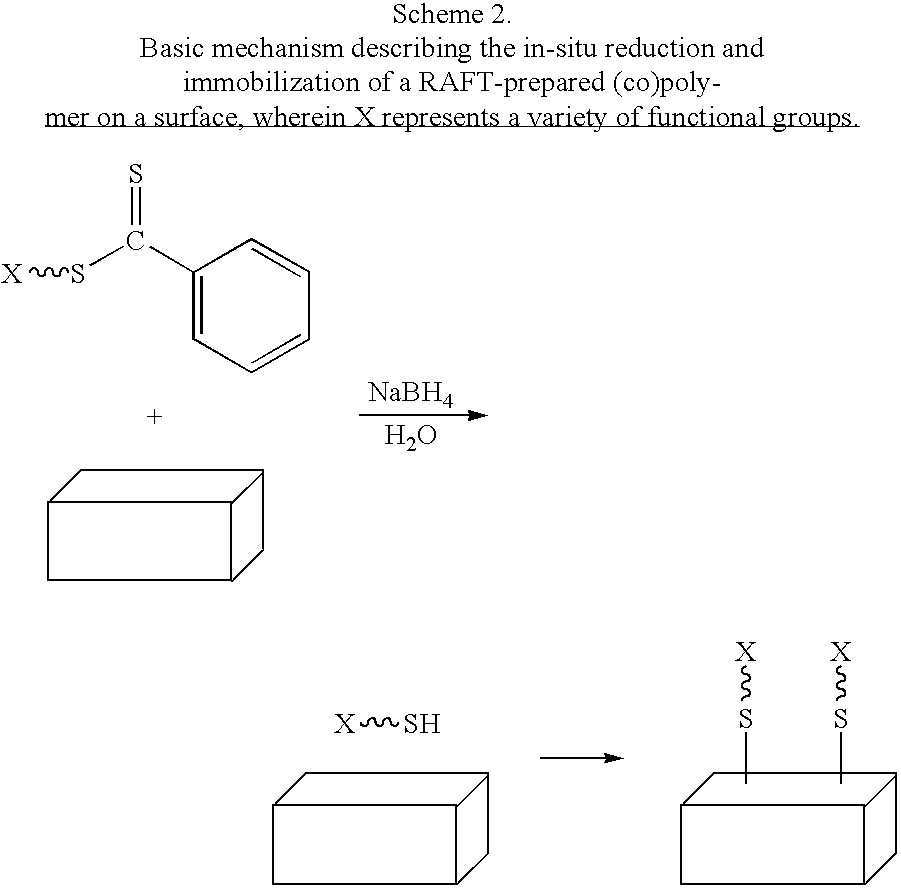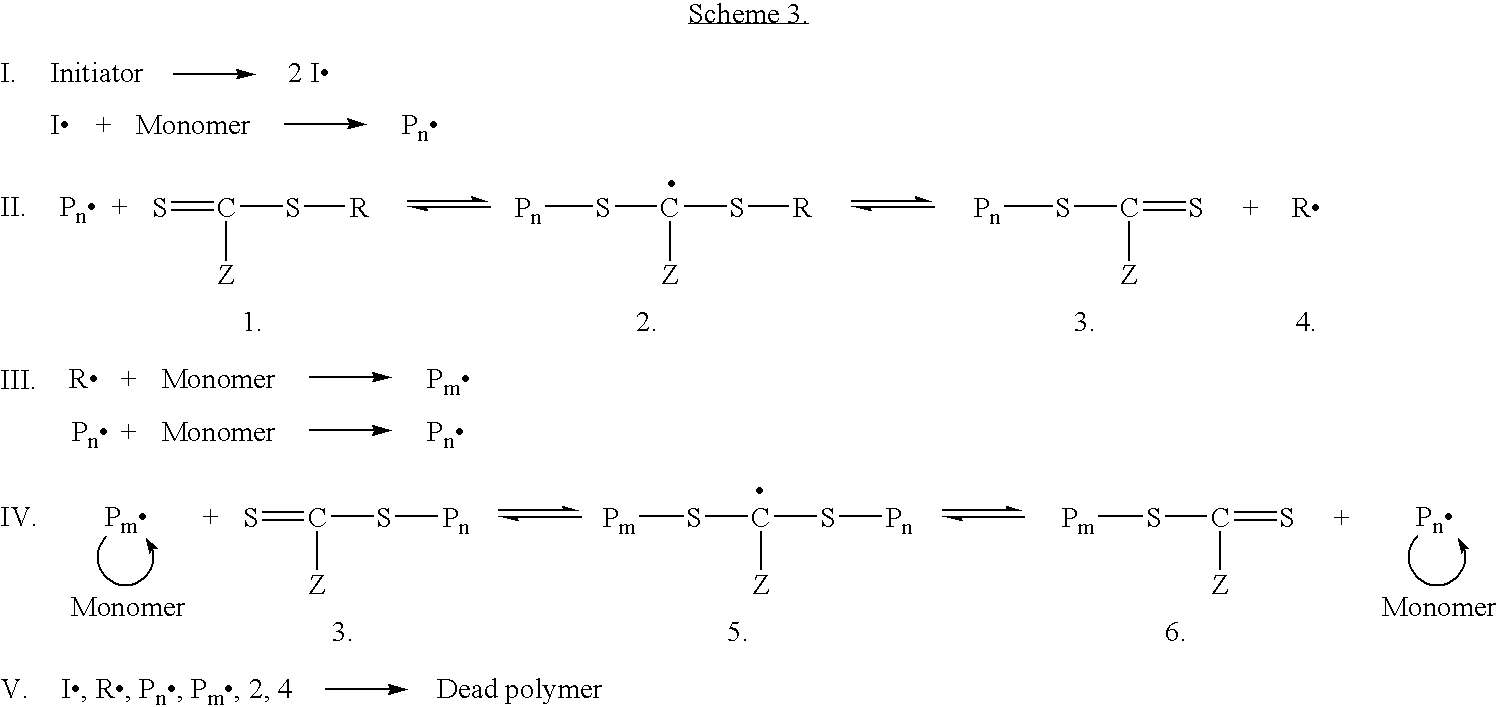Preparation of transition metal nanoparticles and surfaces modified with (CO)polymers synthesized by RAFT
- Summary
- Abstract
- Description
- Claims
- Application Information
AI Technical Summary
Benefits of technology
Problems solved by technology
Method used
Image
Examples
example 1
Preparation of Polymer-Stabilized Gold Particles
[0094]Preparation. Colloidal gold (0.01 wt. % as HAuCl4, 20 nm) was prepared as previously described, or purchased from a commercial supplier. To a test tube equipped with a magnetic stir bar and containing a dithioester end-capped polymer (PDMA, PVBTAC, P(MAEDAPS-b-DMA), or PDMA diheaded) (255 mg) was added a solution of colloidal gold (Aldrich, 1.02 g, 0.01 wt. %). The mixture was stirred to ensure homogeneity. Aqueous 1M NaBH4(˜2 mL) was added dropwise and the mixture was allowed to continue stirring at room temperature for 48 hours. An aliquot (0.50 mL) from the resulting solution was removed and centrifuged for 1 hour at 13,000 rpm. The supernatant was removed and the resulting aggregate was rinsed with deionized water (0.50 mL) with brief agitation. The supernatant was again removed and the aggregate was redispersed in deionized water (0.50 mL) by agitation for 24 hours.
[0095]Characterization. For the observation of the size and ...
example 2
Preparation of Polymer-Stabilized Silver Particles
[0096]Preparation. The colloidal silver solution was prepared in situ from a silver salt (i.e. AgNO3). The appropriate amount of silver salt was added to deionized water (20.0 mL) in order to prepare a 0.01 wt. % solution of the silver ion. The polymer was dissolved in an aliquot of this solution and a similar procedure as described above in Example 1 was employed in order to prepare the polymer-stabilized colloidal solution.
example 3
Preparation of Polymer-Stabilized Platinum Particles
[0097]Preparation. The colloidal platinum solution was prepared in situ from a platinum salt (i.e. Na2PtCl6.6H2O). The appropriate amount of platinum salt was added to deionized water (20.0 mL) in order to prepare a 0.01 wt. % solution of the platinum ion. The polymer was dissolved in an aliquot of this solution and a similar procedure as described above in Example 1 was employed in order to prepare the polymer-stabilized colloidal solution.
PUM
| Property | Measurement | Unit |
|---|---|---|
| Water contact angle | aaaaa | aaaaa |
| Water contact angle | aaaaa | aaaaa |
| Water contact angle | aaaaa | aaaaa |
Abstract
Description
Claims
Application Information
 Login to View More
Login to View More - R&D
- Intellectual Property
- Life Sciences
- Materials
- Tech Scout
- Unparalleled Data Quality
- Higher Quality Content
- 60% Fewer Hallucinations
Browse by: Latest US Patents, China's latest patents, Technical Efficacy Thesaurus, Application Domain, Technology Topic, Popular Technical Reports.
© 2025 PatSnap. All rights reserved.Legal|Privacy policy|Modern Slavery Act Transparency Statement|Sitemap|About US| Contact US: help@patsnap.com



